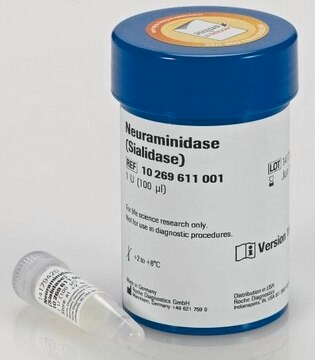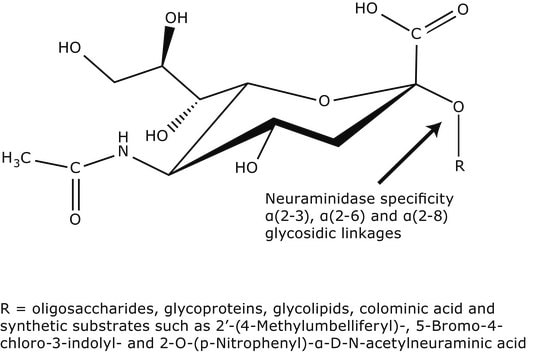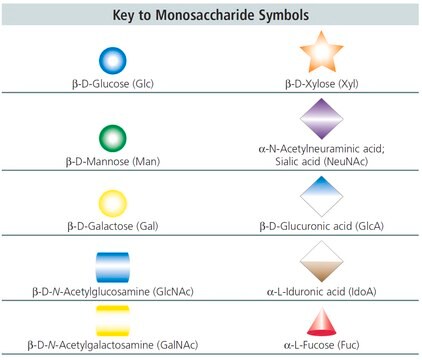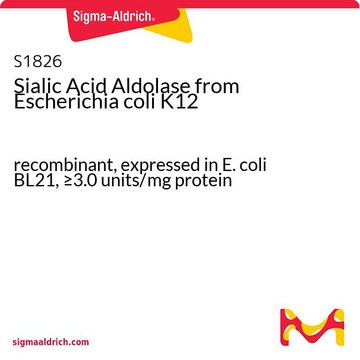N3786
α(2→3,6,8,9) Neuraminidase from Arthrobacter ureafaciens
Proteomics Grade, suitable for MALDI-TOF MS
Synonyme(s) :
Neuraminidase from Arthrobacter ureafaciens, Acyl-neuraminyl Hydrolase, Sialidase
About This Item
Produits recommandés
Forme
lyophilized powder
Niveau de qualité
Qualité
Proteomics Grade
Activité spécifique
≥25 U/vial
Adéquation
suitable for MALDI-TOF MS
Température de stockage
2-8°C
Vous recherchez des produits similaires ? Visite Guide de comparaison des produits
Application
Conditionnement
Qualité
Définition de l'unité
Forme physique
Composants de kit également disponibles séparément
- N3536Neuraminidase 5X Reaction Buffer 1.5 mLFDS
Produit(s) apparenté(s)
Mention d'avertissement
Danger
Mentions de danger
Conseils de prudence
Classification des risques
Resp. Sens. 1
Code de la classe de stockage
11 - Combustible Solids
Classe de danger pour l'eau (WGK)
WGK 1
Point d'éclair (°F)
Not applicable
Point d'éclair (°C)
Not applicable
Certificats d'analyse (COA)
Recherchez un Certificats d'analyse (COA) en saisissant le numéro de lot du produit. Les numéros de lot figurent sur l'étiquette du produit après les mots "Lot" ou "Batch".
Déjà en possession de ce produit ?
Retrouvez la documentation relative aux produits que vous avez récemment achetés dans la Bibliothèque de documents.
Les clients ont également consulté
Articles
Glycan Sequencing Using Exoglycosidases
Notre équipe de scientifiques dispose d'une expérience dans tous les secteurs de la recherche, notamment en sciences de la vie, science des matériaux, synthèse chimique, chromatographie, analyse et dans de nombreux autres domaines..
Contacter notre Service technique









